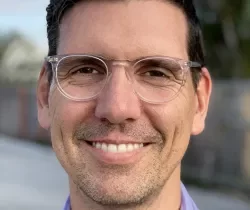If you’re organizing an event, online exposure is critical to sell admission and get people through the door. Social media has quickly emerged as the single most crucial factor in online digital marketing campaigns, with Facebook and Instagram leading the way. While organic social media has been an important force over the years, the potential reach of organic campaigns is often much lower than people think. In order to make a real impact, it’s more important than ever to focus on the paid side of social media.
Organic growth seems to be diminishing before our eyes, with Facebook recording 16 percent growth in 2012 and just 2.27 percent in 2015. Making waves on Instagram with organic marketing alone is also getting much harder due to multiple algorithm and structural changes. As the platform is tweaked to preference its commercial income, events relying on organic results alone are often left out in the cold.
According to Gary Vaynerchuk, “Instagram’s organic reach is finished. So just as we figured it out, it’s over.”
Types of Paid Media Ads
Organic and paid social media campaigns are often easily distinguished, but that doesn’t mean all paid ads are the same. Event organizers can benefit from multiple options across platforms, with each campaign strategy benefiting from an expansive and considered approach. Social platforms often appeal to very different demographics, so it’s important to choose a platform and ad type capable of meeting your target demographic.
For example, while 37 percent of U.S. adults use Instagram on a regular basis, this number almost doubles to 67 percent in the 18-29 age group, and more than doubles to 75 percent in the 18-24 age group. In this demographic, Instagram is practically as popular as Facebook, which enjoys 76 percent coverage among the 18-24 age group and a much higher reach among all adults at 69 percent.
Overall, there are 2.41 billion active monthly Facebook users, with Instagram hitting the 1 billion mark earlier this year.
It’s not all about reach and age brackets, however, with different platforms also offering different ad types, customization options and pricing structures.
Photo Ads
Image-based ads are the cornerstone of both Facebook and Instagram. On Facebook, you can include 125 characters of text plus a headline and link description in addition to the image. Facebook also includes Boosted posts, which is adding spend behind an already highly engaged organic post, but doesn’t allow for additional customization. Instagram in feed photo ads look just like regular posts, only with the “Sponsored” text in the top right corner.
Video Ads
Video ads can be incredibly effective for events because they allow you to showcase past iterations of your event or highlight future assets and artists. Facebook video ads come in all shapes and sizes, from small snippets to huge 240-minute promotional videos. While video ads can be effective on Instagram, the image-based nature of the platform does lead itself to still images in some situations.
Mixed Ads
Both Facebook and Instagram include various options that mix and match images with video content. On Facebook, Slideshow ads create videos from several images, Carousel ads combine up to 10 photos or videos with separate links and Collection ads highlight various products directly in your Facebook feed beneath a cover image. Instagram also includes Carousel and Collection ads, with the carousel swiped through by the user and the collection allowing up to 90 characters of text, and multiple pieces of content which allow for authentic storytelling.
Create stories and make memories
When organizing an ad campaign for your event, it’s important to create stories for your audience in order to make memories and inspire action. While image and video-based ads can be highly effective, both Facebook and Instagram also include a Stories feature for a more immersive experience. Rather than being specifically selected, Facebook Stories are an option under Automatic Placements. Instagram Stories function in a similar way, with photos or videos up to 120 seconds long displayed between people’s organic stories.
The trick here is to create highly native, authentic content that looks as if it’s a “friend,” as the consumer is viewing multiple stories rather than over-produced or repurposed content that seems “ad-like.”
Get Personal With Messenger
In the age of social media, advertising is not all about reach, it’s also about creating conversations and building authentic relationships. Facebook Messenger continues to make waves as a promotional tool, especially for event organizers. With Messenger, you can interact with your audience in real-time, utilize chatbots and answer questions about the event. This allows you to reach out to people on a personal level without the negative associations of some advertising forms.
People are 3.5 times more likely to open a Facebook message than a regular marketing email, with more conversations leading to greater community engagement and more ticket sales.
Running a successful event requires a forward-thinking and multi-pronged approach. While organic social marketing and various other avenues can still be highly effective, the paid end of social media is fast becoming a major player. In order to create a real buzz around your event and get more people through the door, it’s important to add social media ads to your arsenal and integrate them carefully with your wider event ecosystem.
Don’t miss any event-related news: Sign up for our weekly e-newsletter HERE and engage with us on Twitter, Facebook, LinkedIn and Instagram!



Add new comment